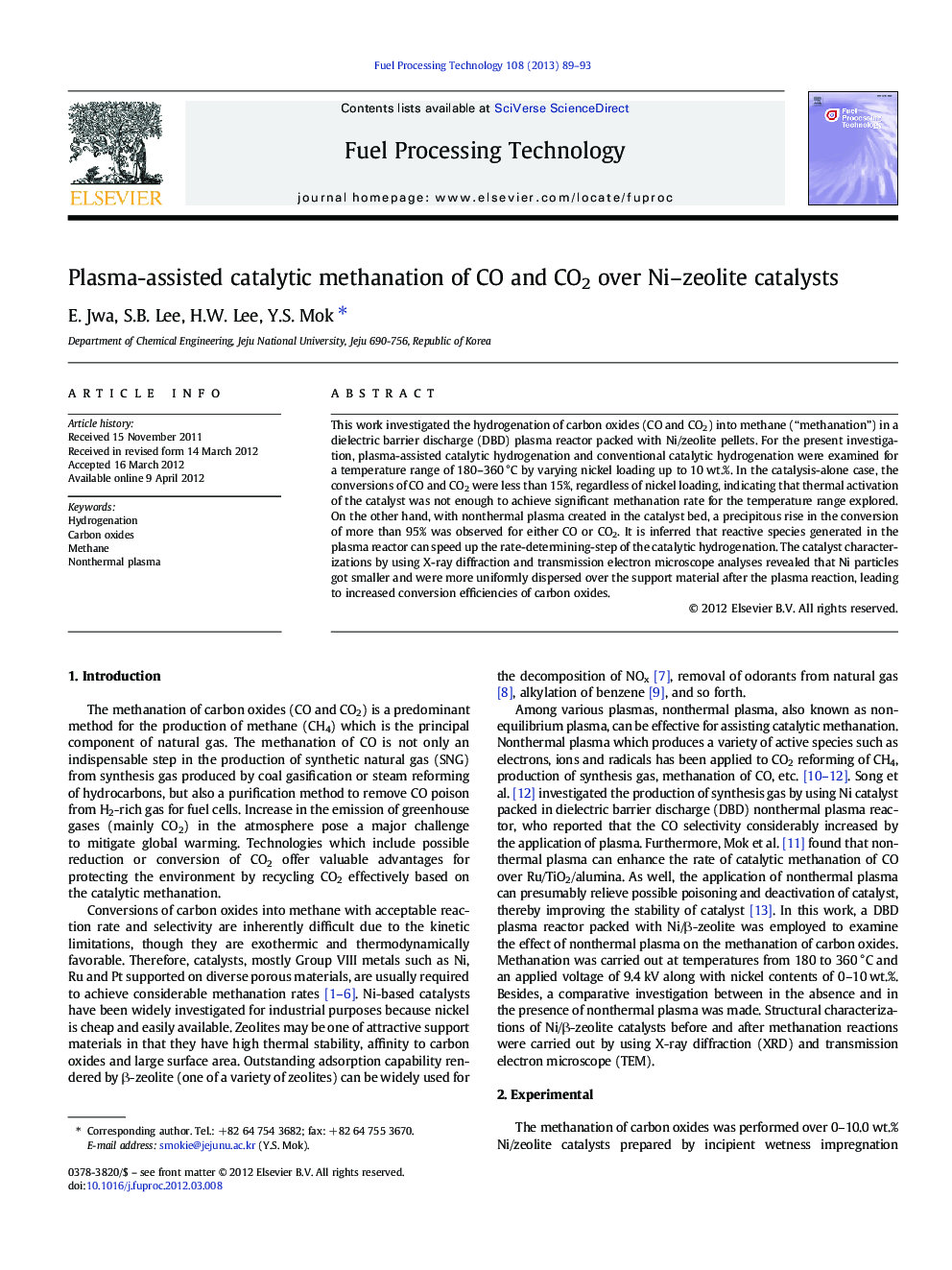| Article ID | Journal | Published Year | Pages | File Type |
|---|---|---|---|---|
| 210142 | Fuel Processing Technology | 2013 | 5 Pages |
This work investigated the hydrogenation of carbon oxides (CO and CO2) into methane (“methanation”) in a dielectric barrier discharge (DBD) plasma reactor packed with Ni/zeolite pellets. For the present investigation, plasma-assisted catalytic hydrogenation and conventional catalytic hydrogenation were examined for a temperature range of 180–360 °C by varying nickel loading up to 10 wt.%. In the catalysis-alone case, the conversions of CO and CO2 were less than 15%, regardless of nickel loading, indicating that thermal activation of the catalyst was not enough to achieve significant methanation rate for the temperature range explored. On the other hand, with nonthermal plasma created in the catalyst bed, a precipitous rise in the conversion of more than 95% was observed for either CO or CO2. It is inferred that reactive species generated in the plasma reactor can speed up the rate-determining-step of the catalytic hydrogenation. The catalyst characterizations by using X-ray diffraction and transmission electron microscope analyses revealed that Ni particles got smaller and were more uniformly dispersed over the support material after the plasma reaction, leading to increased conversion efficiencies of carbon oxides.
► Catalytic conversions of carbon oxides were greatly improved by nonthermal plasma. ► The plasma-catalyitc conversions for CO and CO2 were close to the equilibrium values. ► Ni particles got smaller and were more uniformly dispersed after the plasma reaction.
